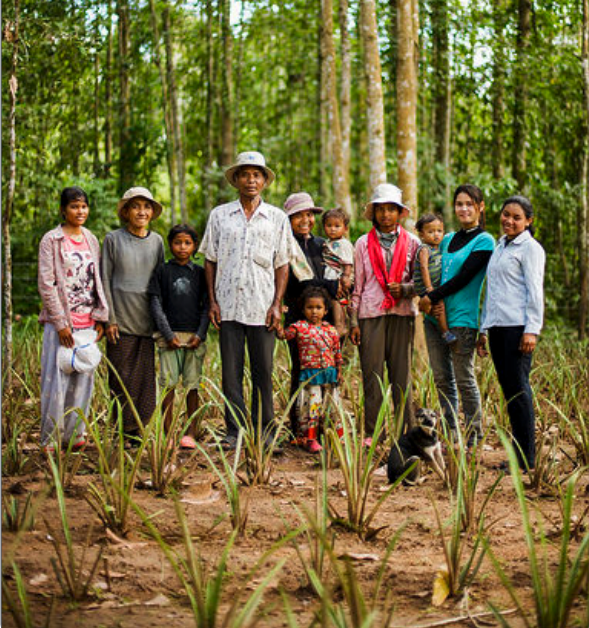Funding Adaptation Through Cambodia’s National Budget

Please note that this content is from 2018. For Cambodia’s latest actions on climate change please see the Kingdom of Cambodia’s Department of Climate Change website and the UNFCCC NDC Registry.
Introduction
Cambodia is highly vulnerable to climate change, being regularly ranked among the 10 most vulnerable countries globally. In recent years, a prolonged three-year drought that ended in 2016 was followed by episodes of severe flooding that had huge economic and social consequences. Lives were lost, homes destroyed, crops devastated, and 19 provinces required government interventions. A 2018 study, “Addressing Climate Change Impacts on Economic Growth in Cambodia,” determined that if global temperature increase is kept below 2°C by 2100 and Cambodia maintains current levels of investment in adaptation, climate change would reduce absolute GDP by 2.5 per cent in 2030 and 9.8 per cent in 2050.
The National Adaptation Plan (NAP) processes underway in a growing number of developing countries require significant funding that is expected to come from a mix of sources, including domestic public finance, international public finance and private finance. Building on an overview brief on domestic public finance options for NAP processes, this sNAPshot takes a closer look at how Cambodia is funding adaptation action through its national budget. It demonstrates how the allocation of public finance can support the integration of adaptation priorities into national programs and help ensure the predictability of financial resources available to implement these priorities.
Cambodia’s NAP Process
Recognizing the need to prepare for the impacts of climate change, Cambodia developed its National Adaptation Programme of Action to Climate Change in 2006. Following on this seminal document, the government established a NAP process in 2014 that aimed to build climate resilience and strengthen ongoing adaptation processes through cross-sectoral programming and implementation at the national and sub-national levels. The NAP process is guided by key plans and frameworks and aims to: a) take a medium- and longterm approach to reducing vulnerability to the adverse effects of climate change; and b) facilitate the integration of adaptation, in a coherent manner, into relevant new and existing policies, strategies, programs and activities.
The coordination of the NAP process is overseen by the National Council for Sustainable Development (NCSD). The Council coordinates climate change actions and promotes the mainstreaming of adaptation in relevant policies, legal instruments, strategic plans, programs, projects and budgets.
The Cambodia Climate Change Alliance (CCCA) supports the NAP process and coordinates inputs from various development partners. The Alliance is working in 2018-2019 to mainstream climate change into legal frameworks and sub-national planning, and to manage and coordinate climate change financing.
Integration of Adaptation Into Government Budgets
Cambodia has made considerable progress toward integrating climate change into national planning and budgeting processes since 2013. Its NAP process document, released in 2017, identifies financing as key to strengthening adaptation implementation and lays out five actions for achieving the financing required.
- Identification of financial sources – In 2016, the NAP process identified 148 unfunded actions from the total of 171 actions in the Sectoral Climate Change Action Plans. The development of the NAP Financing Framework included a prioritization process that identified 40 priority adaptation actions from the list of unfunded actions.
- Ensuring sustainable financing – The integration of adaptation in domestic government budgets is beginning to take place to ensure a continual and relatively predictable source of adaptation financing.
- Ensuring integrated financing – The NAP Financing Framework recognizes that both domestic and international financing are needed for sustainable adaptation programs. Although the integration of climate change into Ministries’ Public Investment Program is limited, a few ministries have started to align their Climate Change Action Plans and program budget submissions.
- Transparency in climate change adaptation budgeting – Cambodia is one of only a few developing countries that annually track domestic and international public climate finance flows. These reviews of expenditure and funding sources in the 14 ministries with approved climate change plans are essential to assessing the extent to which public resources are contributing to the implementation of the NAP process.
- Sectoral allocations and donor funds align with plans – The 2015 review of climate expenditure determined that sector budget allocations and donor funds are not aligned with Sectoral Climate Change Action Plans, and many priorities remain unfunded. The review indicated a financing gap in most ministries for implementation of their priority actions, despite an increasing budget contribution from the national government. The NAP process is addressing this issue moving forward.
Lessons
Cambodia’s experience provides lessons on allocating and tracking domestic finance for NAP processes:
- Political leadership is critical to domestic financing of adaptation action;
- Expenditure data needs to be combined with data on climate adaptation outcomes to assess the effectiveness and efficiency of public investments;
- Some climate change actions are supported with existing budget funds that are not identified as climate finance;
- Lack of finance is a critical barrier to the NAP process;
- “Domestic resources can mobilise a more immediate, nationally driven response to climate change, and when aligned with external funding sources, can gain a much greater impact;”
- The integration of programs and domestic and international funding sources improves the effectiveness of the NAP process;
- Sustainable financing is based on country ownership and a long-term view;

Related resources
- Cambodia Climate Change Alliance (CCCA). (2016). Cambodia needs to seize the opportunities in climate finance. Khmer Times.
- Department of Climate Change / GSSD. (2017). Cambodia Climate Change Alliance – DESCRIPTION.
- Kingdom of Cambodia. (2016). Report on Climate Public Environment Review, 2015. Phnom Penh: Ministry of Economic and Finance.
- Tchaparian, S. (2016). Closing the climate finance gap in Cambodia: Could training be the simple answer?
- USAID. (2015, September). Incorporating climate change into EPA’s planning, management, and budget system: Lessons for Cambodia.
- sNAPshot: Domestic public finance for implementation of NAPs
(0) Comments
There is no content